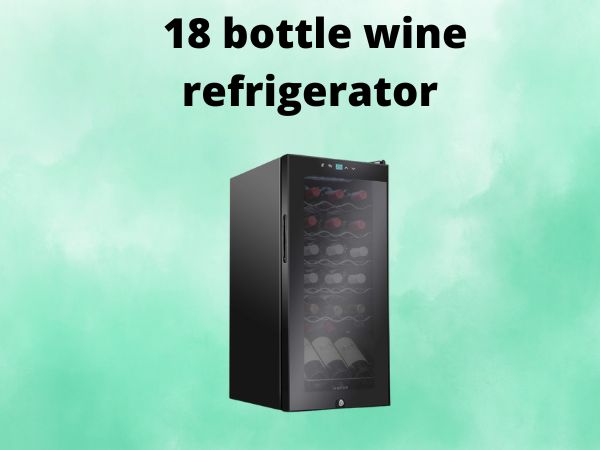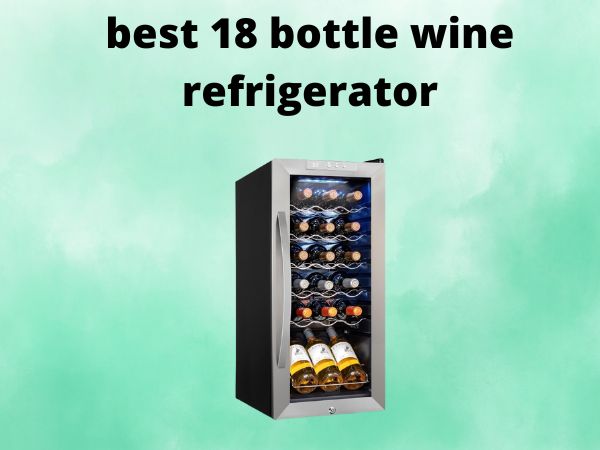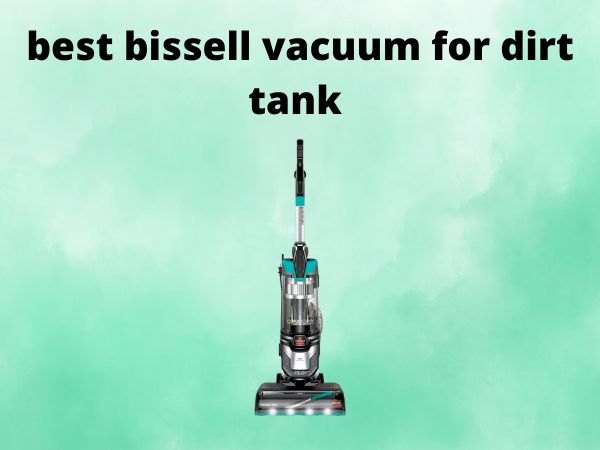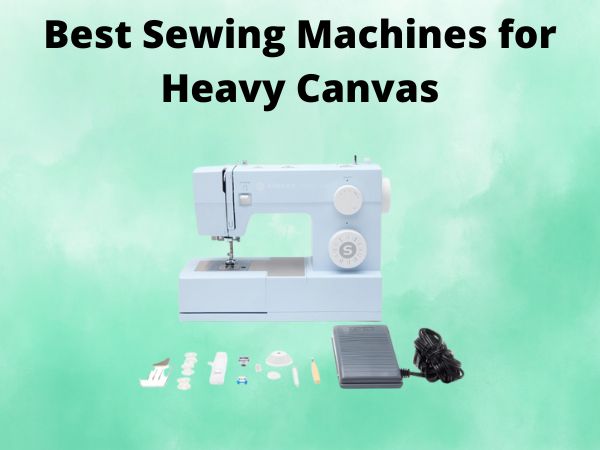What Is The Best 18 Bottle Wine Refrigerator [In 2026]
Have you ever opened a bottle of wine you’ve been saving, only to find it doesn’t taste quite right? Or perhaps you’ve run out of space in your regular refrigerator because your wine collection keeps growing? If you’re nodding along, then it might be time to invest in a dedicated wine refrigerator.
For wine enthusiasts who are building their collection but don’t need massive storage, an 18-bottle wine refrigerator offers the perfect balance of capacity and space efficiency. Whether you’re a budding oenophile or simply enjoy having a selection of wines ready to serve at the perfect temperature, these compact units can make all the difference in preserving the flavors and aromas of your favorite bottles.
In this comprehensive guide, I’ll walk you through everything you need to know about the best 18-bottle wine refrigerators on the market, comparing their features, performance, and value to help you make an informed decision. Let’s uncork the details and find the perfect home for your wine collection!
Table of Contents
Top Five 18 Bottle Wine Refrigerators: Detailed Reviews
Now that we understand what to look for, let’s examine five of the best 18-bottle wine refrigerators currently available, complete with their pros and cons.
SCHMÉCKÉ 18 Bottle Compressor Wine Cooler
The SCHMÉCKÉ wine cooler combines elegant design with reliable performance, making it a popular choice among wine enthusiasts.
Key Features:
- Temperature range of 41-64°F
- Stainless steel finish with double-paned UV-resistant glass
- Digital touch controls with bright LCD display
- Adjustable shelves to accommodate various bottle sizes
- Built-in lock system for security
- Interior LED lighting that won’t harm wine
Pros:
- Exceptionally quiet operation—users report having to concentrate to hear it running
- Consistent temperature maintenance with minimal fluctuation
- Attractive stainless steel exterior that complements most kitchen designs
- Removable shelves provide flexibility for different bottle shapes
- The lock feature adds security for your collection
Cons:
- Single temperature zone only (though this is common for 18-bottle units)
- Some users report durability concerns, leading them to purchase extended warranties
- The light automatically turns off rather than staying on for display purposes
- Slightly higher price point compared to some competitors
Who Should Buy It:
The SCHMÉCKÉ is perfect for those who prioritize quiet operation and aesthetic appeal. If you plan to place your wine refrigerator in a living area or open-concept kitchen where noise would be noticeable, this model’s whisper-quiet operation makes it an excellent choice. It’s also ideal for red wine collectors, as its single temperature zone works perfectly for maintaining optimal red wine storage temperatures.
Ivation 18 Bottle Compressor Wine Cooler
Ivation has built a solid reputation in the wine storage market, and their 18-bottle compressor model offers reliable performance at a competitive price point.
Key Features:
- Temperature range of 41-64°F
- Black exterior with double-paned UV-resistant glass
- Digital touch control panel with temperature memory function
- Adjustable shelves for bottle flexibility
- Interior LED lighting
- Lock feature for security
Pros:
- Quick cooling capability that reaches target temperature efficiently
- Reasonably quiet operation that won’t disrupt conversations
- Good temperature stability with minimal fluctuation (typically 3-4 degrees)
- Sleek black design that blends well with modern decor
- Solid construction quality for the price point
Cons:
- Some users report temperature creep of up to 4 degrees before compressor activation
- Requires periodic defrosting (every 3-4 months according to some users)
- May struggle to maintain lowest temperatures in very hot environments
- Interior capacity may be tight for certain oversized bottle shapes
Who Should Buy It:
The Ivation wine cooler is well-suited for practical wine enthusiasts who want reliable cooling without unnecessary frills. It’s particularly good for those in moderate climates who primarily store standard-sized bottles. If you’re looking for a good balance of performance and value, and don’t mind occasional maintenance like defrosting, this model offers excellent bang for your buck.
STAIGIS 18 Bottle Compressor Wine Cooler
The STAIGIS wine refrigerator offers a wider temperature range than many competitors, making it versatile for various wine storage needs.
Key Features:
- Extended temperature range of 40-66°F
- Black exterior with UV-resistant glass door
- Bright LCD touch panel for easy control
- Removable shelves for customizable storage
- Premium interior LED lighting
- Compact design that maximizes space efficiency
Pros:
- Wider temperature range accommodates more wine varieties
- Consistent temperature performance with minimal fluctuation
- Solid construction with good packaging for safe delivery
- User-friendly control interface that’s easy to operate
- Good value for the price point compared to premium brands
Cons:
- Manual defrost system rather than automatic
- Less name recognition than some competing brands
- Some users may find the black finish shows fingerprints more readily
- Limited warranty period (1 year) compared to some competitors
Who Should Buy It:
The STAIGIS is an excellent choice for versatile wine storage needs. Its wider temperature range makes it suitable for everything from champagne to full-bodied reds. Wine collectors on a budget will appreciate its solid performance without the premium price tag of more established brands. It’s also well-suited for spaces where every inch counts, thanks to its efficient dimensions.
Tylza 12″ Wine Cooler Refrigerator 18 Bottle
The Tylza stands out with its built-in capability and premium features that rival much more expensive units.
Key Features:
- Versatile built-in or freestanding installation
- Temperature range of 41-72°F (widest in our comparison)
- Stainless steel finish with double-layer tempered glass
- Advanced vibration absorption system
- Ultra-quiet operation (under 36 dB)
- Frost-free technology eliminates manual defrosting
Pros:
- Exceptionally quiet operation makes it ideal for living spaces
- Installation flexibility allows for under-counter or standalone use
- Widest temperature range of all models reviewed
- No-fog glass door maintains clear visibility of collection
- Premium look and feel that enhances home decor
- 12-month warranty with lifetime technical support
Cons:
- Higher price point than some competitors
- Larger dimensions may require more installation space
- Some delivery issues reported (though product quality remains high)
- Lock mechanism could be more secure according to some users
Who Should Buy It:
The Tylza wine refrigerator is perfect for those looking for installation flexibility and premium features. If you’re planning to create a built-in wine station or want the option to do so in the future, this model’s front ventilation makes it ideal. It’s also excellent for those sensitive to noise, as its advanced compressor and vibration dampening make it one of the quietest options available.
Velieta 12 Inch Wine Cooler Refrigerator 18 Bottle
The Velieta wine cooler combines professional-grade features with elegant design elements for the discerning wine collector.
Key Features:
- Built-in or freestanding installation options
- Wide temperature range (41-72°F)
- Blue ambient lighting for aesthetic appeal
- Moveable wood shelves rather than wire racks
- Safety lock system
- Front ventilation design for flexible placement
Pros:
- Exceptionally quiet operation compared to competitors
- Consistent temperature maintenance with minimal fluctuation
- Sturdy wood shelves provide better bottle support
- Blue ambient lighting creates an attractive display
- High-quality front ventilation system for true built-in capability
- Elegant appearance enhances home decor
Cons:
- Premium price point that may exceed some budgets
- Heavier unit (approximately 200 lbs) making installation challenging
- Some delivery logistics issues reported by customers
- Requires proper space planning due to front ventilation requirements
Who Should Buy It:
The Velieta is ideal for serious wine enthusiasts who want professional-grade storage in a home setting. If aesthetics are as important to you as functionality, the blue ambient lighting and wooden shelves will appeal to your sense of style. It’s perfect for those creating a dedicated wine area or built-in bar setup, and the lock feature makes it suitable for homes where securing premium bottles is a priority.
Why Every Wine Enthusiast Needs a Dedicated Wine Refrigerator
Before diving into specific models, let’s talk about why a dedicated wine refrigerator is more than just a luxury—it’s practically essential for anyone serious about wine.
Temperature Consistency and Wine Quality
Did you know that temperature fluctuations are one of the biggest enemies of wine? Your regular kitchen refrigerator is designed to keep food cold (typically around 35-38°F), which is actually too cold for most wines. Plus, every time you open that door, the temperature inside fluctuates dramatically.
Wine refrigerators, on the other hand, are specifically engineered to maintain the ideal temperature range for wine storage (typically 41-64°F). This consistency is crucial for allowing wines to age properly and maintain their intended flavor profiles. Even if you’re not aging expensive bottles for years, keeping wine at proper serving temperature makes a noticeable difference in taste.
Protection from UV Light and Vibration
Another enemy of wine? Light. Particularly UV rays, which can degrade and prematurely age wine. Quality wine refrigerators feature UV-resistant glass doors that protect your collection while still allowing you to showcase your bottles.
Additionally, standard refrigerators produce significant vibration from their compressors, which can disturb the sediment in wine and interfere with the aging process. Wine coolers are designed to minimize vibration, creating a more stable environment for your bottles to rest undisturbed.
Proper Storage Position and Organization
Wine bottles should ideally be stored horizontally to keep the cork moist and prevent it from drying out and shrinking (which can lead to oxidation). Wine refrigerators are designed with this in mind, featuring specialized racks that hold bottles in the optimal position.
The organization aspect shouldn’t be overlooked either. Having a dedicated space for your wine collection means you can easily see what you have, track how long you’ve been storing certain bottles, and quickly select the perfect wine for any occasion.
Key Features to Consider When Buying an 18 Bottle Wine Cooler
Shopping for a wine refrigerator can be overwhelming with all the technical specifications and features available. Let me break down the most important factors to consider:
Temperature Range and Control Systems
The ideal wine refrigerator should offer a temperature range wide enough to accommodate different types of wine. Most quality units provide a range of approximately 40-65°F, allowing you to store everything from sparkling wines (which benefit from cooler temperatures) to full-bodied reds (which are best served slightly warmer).
Look for models with digital temperature controls that allow for precise adjustments and clear displays so you can monitor the temperature at a glance. Some higher-end models even offer dual temperature zones, though these are less common in the 18-bottle capacity range.
Noise Level and Vibration
Since your wine refrigerator will likely be in a living space rather than a garage or basement, noise level matters. Compressor-based units tend to be more powerful but can produce more noise than thermoelectric models. However, many modern compressor units are designed to operate quietly, with noise levels below 40 decibels (comparable to a library whisper).
Vibration reduction is equally important—look for models that advertise anti-vibration systems or vibration-dampening technology to ensure your wines rest undisturbed.
UV Protection and Door Quality
A good wine refrigerator should feature UV-resistant glass, typically double-paned or “thermopane” glass that not only blocks harmful light but also provides better insulation. The quality of the door seal is critical too—it should close firmly and create an airtight environment to maintain temperature stability.
Some models also include door locks, which can be useful if you have particularly valuable bottles or curious children in your household.
Installation Options (Freestanding vs. Built-in)
Wine refrigerators generally come in two installation types: freestanding and built-in. Freestanding units require space around them for proper ventilation, particularly at the back where heat is expelled. Built-in models have front ventilation systems that allow them to be installed under counters or within cabinetry without overheating.
If you’re planning to integrate your wine fridge into existing cabinetry, make sure to choose a model specifically designed for built-in installation. Using a freestanding unit in a built-in application can lead to overheating and premature failure.
Energy Efficiency and Running Costs
Wine refrigerators run continuously, so their energy efficiency can impact your electricity bill. Look for models with energy-saving features like LED lighting (rather than incandescent) and good insulation. Some units also have energy-efficient compressors or auto-defrost systems that help minimize power consumption.
While energy efficiency ratings aren’t always prominently displayed for wine refrigerators, some manufacturers do provide estimated annual energy consumption figures that can help you compare operating costs.
Comparison of the Top 5 18 Bottle Wine Refrigerators
Now that we’ve examined each model individually, let’s compare them across several key factors to help you determine which one best suits your specific needs.
Temperature Range and Cooling Performance
When it comes to temperature flexibility, the Tylza and Velieta lead the pack with impressively wide ranges (41-72°F), making them suitable for virtually any wine variety. The STAIGIS follows closely with its 40-66°F range, while the SCHMÉCKÉ and Ivation offer more standard 41-64°F ranges.
For cooling consistency, all five models perform admirably, though the Tylza and Velieta seem to maintain the most stable temperatures with minimal fluctuation. The Ivation shows slightly more temperature variance (3-4 degrees) before the compressor activates, which is normal but something to consider if you’re storing particularly temperature-sensitive wines.
Noise and Vibration Levels
For noise-sensitive environments, the SCHMÉCKÉ and Tylza stand out as the quietest options, with the Tylza specifically advertising noise levels below 36 dB. The Velieta also receives high marks for quiet operation from users. While the Ivation and STAIGIS are by no means loud, they produce somewhat more noticeable compressor noise during cooling cycles.
Vibration control is critical for proper wine storage, and the Tylza’s advanced vibration absorption system gives it an edge in this category. The other models all incorporate some form of vibration dampening technology, but with varying degrees of effectiveness.
Design and Aesthetics
Design preferences are subjective, but the stainless steel finishes of the SCHMÉCKÉ and Tylza tend to coordinate well with most modern kitchen appliances. The Velieta’s wooden shelves and blue ambient lighting create a more sophisticated, showcase-worthy appearance. The black finishes of the Ivation and STAIGIS offer a sleek, understated look that works well in contemporary settings.
In terms of display features, the Velieta’s blue lighting creates the most dramatic presentation, while all models include some form of interior LED illumination. The SCHMÉCKÉ and Ivation have particularly bright LCD displays that are easy to read even in low light.

Value for Money
When considering price relative to features, the STAIGIS offers strong value, providing solid performance and a decent feature set at a more accessible price point. The Ivation strikes a good balance of brand reputation and affordability. The SCHMÉCKÉ commands a slight premium but justifies it with exceptional quietness and build quality.
At the higher end, the Tylza and Velieta represent significant investments but offer the most complete feature sets, particularly with their built-in installation capabilities and wider temperature ranges. For those planning long-term use or integration into cabinetry, these premium models may ultimately provide better value despite higher initial costs.
Customer Satisfaction and Reliability
Based on user feedback, all five models enjoy generally positive reviews, but some patterns emerge regarding reliability. The SCHMÉCKÉ users occasionally mention concerns about longevity, with some opting for extended warranties. The Ivation receives praise for reliability but requires periodic defrosting maintenance.
The Tylza and Velieta appear to have the strongest construction quality and fewest reported technical issues, but as premium products, customer expectations are correspondingly higher. The STAIGIS, despite being less established as a brand, seems to deliver reliable performance that meets or exceeds user expectations for its price point.
How to Get the Most from Your 18 Bottle Wine Refrigerator
Once you’ve selected the perfect wine refrigerator, proper usage and maintenance will ensure it serves you well for years to come. Here are some expert tips:
Optimal Temperature Settings for Different Wine Types
Different wines truly do show their best at different temperatures. Here’s a quick guide to optimal storage temperatures:
- Sparkling wines and champagne: 40-45°F
- White wines and rosés: 45-50°F
- Light-bodied reds (Pinot Noir, Beaujolais): 50-55°F
- Medium to full-bodied reds (Merlot, Cabernet): 55-64°F
- Fortified wines (Port, Madeira): 55-68°F
If your wine refrigerator has a single temperature zone (as most 18-bottle units do), a compromise setting of 53-57°F works well for mixed collections. This range is cool enough for whites to be drinkable (though you might chill them further before serving) and warm enough that reds won’t be damaged.
Remember that serving temperature often differs from storage temperature—you might want to remove reds 20-30 minutes before serving to allow them to warm slightly, while whites can be served directly from the cooler.
Maintenance Tips for Longevity
To keep your wine refrigerator running optimally:
- Regular cleaning: Dust the exterior and condenser coils at least quarterly to prevent overheating.
- Check door seals: Ensure the gaskets remain tight and free from cracks or tears.
- Defrosting when needed: Models without auto-defrost may need periodic defrosting to prevent ice buildup (typically when ice reaches 1/4 inch thickness).
- Proper ventilation: Maintain the recommended clearance around your unit (particularly important for freestanding models).
- Avoid overloading: Resist the temptation to squeeze in extra bottles beyond the stated capacity, as this can restrict airflow.
- Level placement: Ensure your refrigerator sits on a level surface to prevent undue strain on the compressor.
- Power protection: Consider using a surge protector to guard against power fluctuations that can damage electronic components.
Proper Loading and Organization Techniques
Strategic organization makes your wine collection more accessible and enjoyable:
- Keep it full (but not overcrowded): A fuller refrigerator maintains temperature better than an empty one, but leave some space for air circulation.
- Store horizontally: Always store corked wines on their sides to keep the cork moist.
- Organize by readiness: Place wines that are ready to drink in more accessible positions.
- Consider labeling: Some collectors use color-coded dots or tags to indicate wine types or drinking windows.
- Handle with care: Minimize vibration by handling bottles gently when adding or removing them.
- Allow settling time: After purchasing new bottles, let them rest in the refrigerator for a few days before drinking to recover from “bottle shock” (the stress of transportation).
Frequently Asked Questions About 18 Bottle Wine Refrigerators
How much electricity does an 18-bottle wine refrigerator typically use?
Most 18-bottle wine refrigerators consume between 80-100 watts when running, similar to a standard light bulb. This translates to approximately 1-2 kilowatt-hours per day or roughly $3-7 per month on your electricity bill, depending on local rates. Compressor models tend to be more energy-efficient than thermoelectric units, despite their more powerful cooling capabilities.
Can I store open bottles in my wine refrigerator?
Yes, you can store open bottles in your wine refrigerator, but they should be properly resealed with a quality wine stopper or vacuum preservation system. Even in ideal storage conditions, most wines begin to oxidize once opened and should be consumed within 3-5 days (whites) or 5-7 days (reds) for optimal flavor. Place open bottles upright rather than horizontally to minimize potential leakage.
Why does my wine refrigerator need defrosting if it’s not below freezing inside?
Even at wine storage temperatures (above freezing), humidity in the air can condense and eventually freeze on the evaporator coils inside the refrigerator. Models without auto-defrost systems require periodic manual defrosting to maintain cooling efficiency and prevent ice buildup from taking up valuable space or affecting temperature stability. How often you’ll need to defrost depends on your usage patterns and local humidity levels.
Can I store other beverages or food items in my wine refrigerator?
While technically possible, wine refrigerators are specifically designed for wine storage with temperatures typically ranging from 41-64°F—warmer than standard refrigeration for food safety (below 40°F). They also prioritize humidity control and minimal vibration, which aren’t necessary for other beverages. For occasional storage of champagne, beer, or soft drinks, a wine refrigerator works fine, but it’s not recommended for perishable food items requiring colder temperatures.
Is it worth paying more for a built-in capable wine refrigerator if I’m not planning to install it under a counter right away?
Even if immediate built-in installation isn’t planned, front-venting models like the Tylza and Velieta offer valuable flexibility for future use. They typically feature better construction quality and cooling systems that handle varied environments more effectively. If there’s any possibility you might want built-in installation in the future, or if you might place the unit in a confined space, the additional investment in a front-venting model could save you from having to replace the entire unit later.
Conclusion: Choosing the Best 18 Bottle Wine Refrigerator for Your Needs
After thoroughly examining these five excellent 18-bottle wine refrigerators, it’s clear that each offers distinct advantages depending on your specific needs and preferences.
For those prioritizing whisper-quiet operation and elegant design, the SCHMÉCKÉ stands out as an excellent choice. If you’re looking for solid performance at a more budget-friendly price point, the Ivation and STAIGIS models deliver remarkable value.
For wine enthusiasts planning built-in installations or seeking professional-grade features, the premium Tylza and Velieta models justify their higher price tags with superior construction, wider temperature ranges, and installation flexibility.
Remember that the best wine refrigerator isn’t necessarily the most expensive one—it’s the one that meets your specific storage needs, fits your space requirements, and operates reliably within your environment. Consider how and where you’ll use it, what types of wine you typically enjoy, and how your collection might grow over time.
Whichever model you choose, a dedicated wine refrigerator represents an investment in the quality and enjoyment of your wine. By maintaining proper storage conditions, you’ll ensure that every bottle delivers its full potential of flavor and aroma when you’re ready to uncork and enjoy it.




